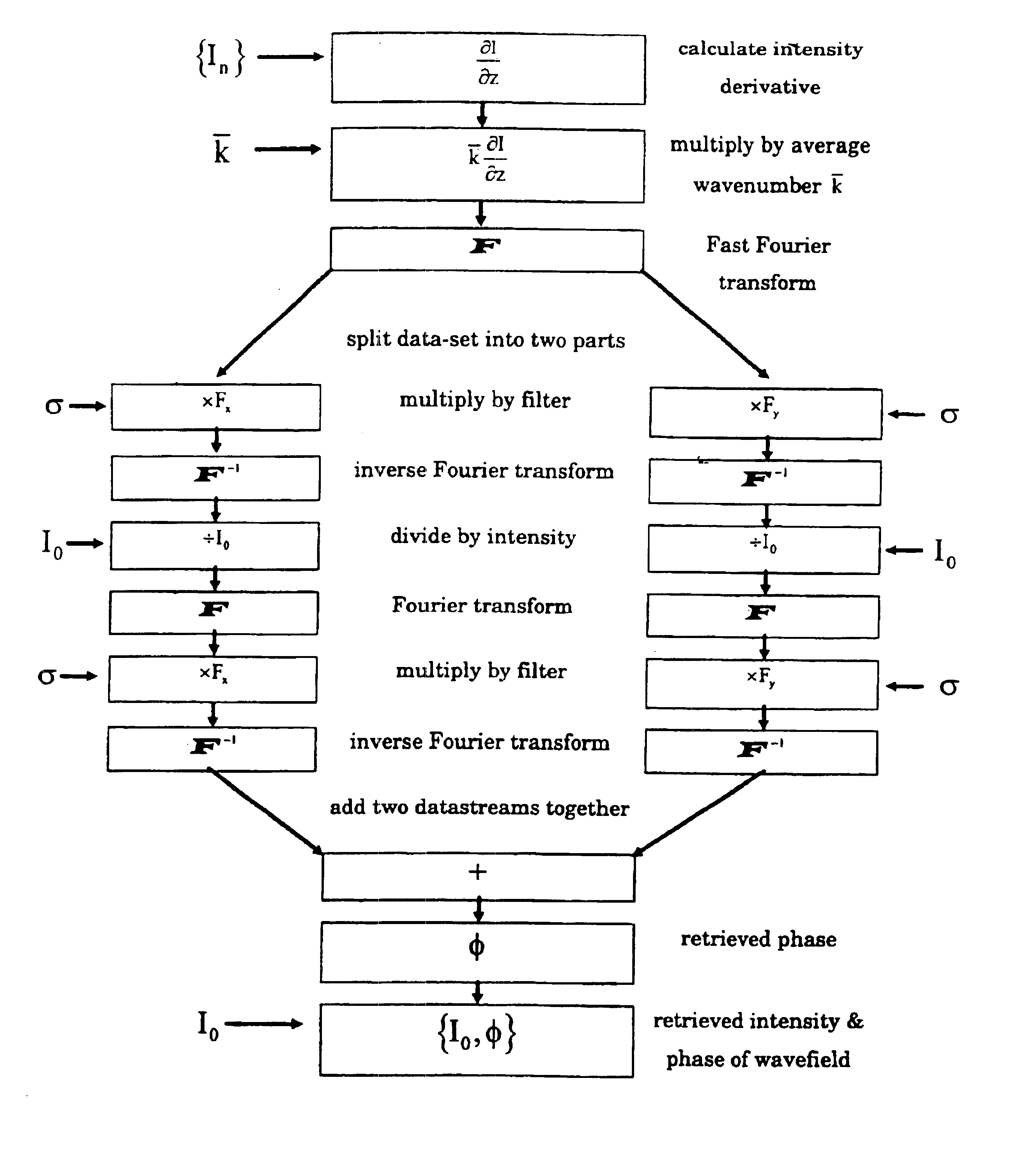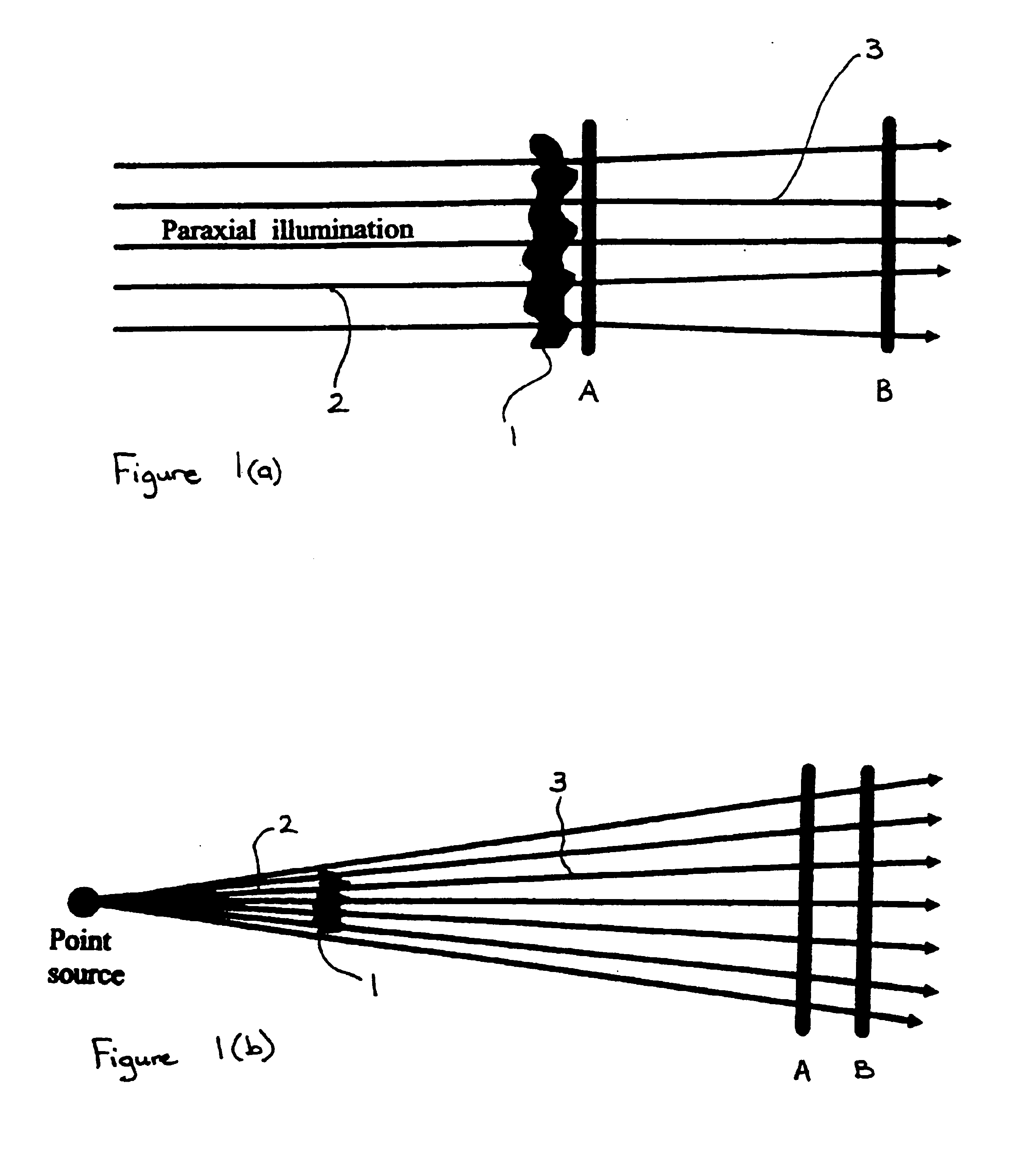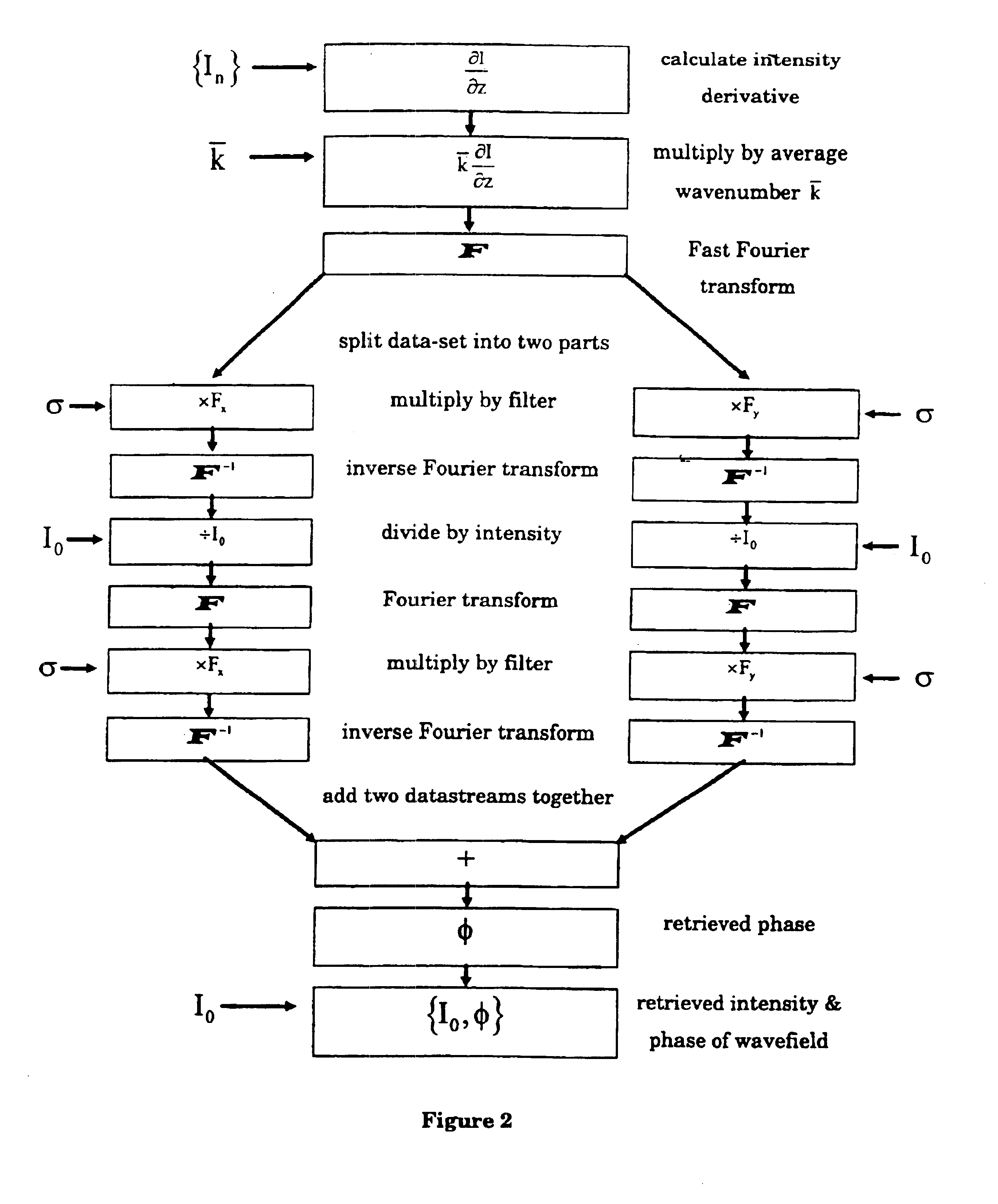Phase determination of a radiation wave field
a radiation wave field and phase determination technology, applied in image data processing, photometry, instruments, etc., can solve the problems of introducing significant computational complexity, reducing the accuracy of phase shift measurement, so as to reduce the spatial resolution and improve the rate of change. the effect of the rate of chang
- Summary
- Abstract
- Description
- Claims
- Application Information
AI Technical Summary
Benefits of technology
Problems solved by technology
Method used
Image
Examples
example 1
Simulations with Normally Incident Plane Wave Irradiation
[0169]A simulation was conducted in accordance with the arrangement shown in FIG. 1(a) corresponding to planar illumination. The example shows the operation of the method on simulated noise-free data. Diffraction patterns are calculated using the “angular-spectrum” formalism, an orthodox procedure. FIGS. 3(a) to 3(f) show images produced in the simulation.
[0170]Dimensions of all images are 1.00 cm square and provide a sampling array of 256×256 pixels in a plane extending perpendicularly across the propagation direction of the radiation. The wavelength of the light was taken to be 632.8 nm. The intensity in the plane z=0, which varies from 0 to 1 in arbitrary units, is shown in FIG. 3(a). Within the area of nonzero illumination, the minimum intensity was 30% of the maximum intensity. (The black border around the edge of the intensity image corresponds to zero intensity.) The input phase, which varies from 0 to π radians, is sho...
example 2
[0174]As shown in FIG. 5, radiation such as X-rays, visible light or electrons from a point source 10 is allowed to propagate through free space to the object 11, located at a distance dso from the source. The radiation passes through the object 11, and is allowed to propagate a further distance dod to one of the image planes I1, I2 . . . In in which the intensity of the radiation is detected. This detection is performed using a standard device such as a CCD camera, image plate or other device capable of registering and digitising the intensity distribution. One or both of the distances dso and / or dsd is then changed so as to introduce defocus into the images and the intensity distribution is measured once again. The case of dod=0 corresponding to contact-imaging with zero propagation distance is included as one possible measurement.
[0175]The intensity data is then processed using the above phase recovery method, to recover the decoupled intensity and phas...
example 3
Quantitative Phase Amplitude Microscopy
[0178]FIG. 6 schematically shows an arrangement for quantitative phase amplitude microscopy. A sample is illuminated using a source of white light Köhler illumination 15, commonly found on optical microscopes. The light is transmitted through an object 16 and collected by a microscope imaging system 17 and relayed to a CCD camera 18 or other digital imaging device having a planar imaging surface. Three images are collected: an in-focus image, Io, and two slightly out of focus images I+ and I−. The defocus is obtained by suitable means such as a drive system 19 to adjust the microscope focus knob. The defocus introduced is usually quite small so that degradation in spatial resolution is minimised, although the optimal amount of defocus to use is determined by sample properties and imaging geometry such as magnification, numerical apertures, etc.
[0179]When taking the images the numerical aperture of the condenser is chosen to be less than the num...
PUM
 Login to View More
Login to View More Abstract
Description
Claims
Application Information
 Login to View More
Login to View More - R&D
- Intellectual Property
- Life Sciences
- Materials
- Tech Scout
- Unparalleled Data Quality
- Higher Quality Content
- 60% Fewer Hallucinations
Browse by: Latest US Patents, China's latest patents, Technical Efficacy Thesaurus, Application Domain, Technology Topic, Popular Technical Reports.
© 2025 PatSnap. All rights reserved.Legal|Privacy policy|Modern Slavery Act Transparency Statement|Sitemap|About US| Contact US: help@patsnap.com



